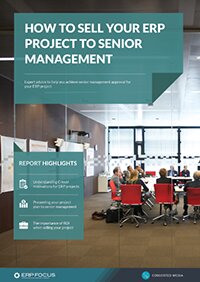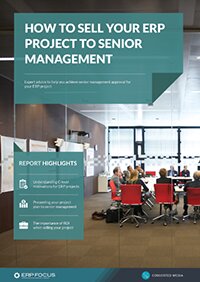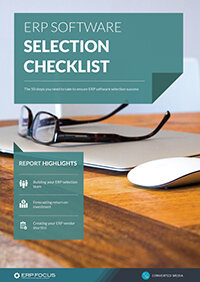3 key stakeholders for your ERP requirements analysis
Who are the stakeholders that must be satisfied to ensure the success of an ERP project? The answer will be different in any organization.
Your boss is always the first person to satisfy. Your success depends to a degree on making your boss look good. Your boss has a boss too and all of them want to look good to their boss.
ERP, like most projects, should have an executive champion. That person will use their influence to help or hurt the ERP project and is certainly a stakeholder.
Recommended reading: Our guide to selling your ERP project to senior management will help you achieve executive level buy-in for new software.
Concerning ERP requirements analysis and the success of the project there are three groups that should be considered key stakeholders.
1. ERP users with the most to gain
Some department or function feels the most pain from the existing ERP and will benefit most when the new ERP is implemented. They might not be the ones who complain loudest or most frequently today. For example, Production might spend hours managing jobs but they do it quietly and have soldiered on for years. An ERP that meets their requirements can do the work of several people and get jobs into production faster. Complaints might come from Sales but the most gain is from Production. Either way, the enterprise succeeds.
2. ERP users with the most risk
When we define requirements, we make an assumption that the whole enterprise will benefit. But we also take steps toward an unknown, and need to recognize there are risks.
Recommended Reading: ERP Implementation Guide - 11 Steps to Success
One successful business I knew of used a well-known ERP and used other software in parallel to manage the ingredients, temperatures, and pressures required for its process. Using two systems worked but required a duplication of effort and improving the throughput of the process was difficult.
When we define requirements, we make an assumption that the whole enterprise will benefit. But we also take steps toward an unknown, and need to recognize there are risks.
Their initial requirement stated during the ERP selection process was to improve process speed and reduce variation in the time required for batch production. Engineering had to take some risk, and had to trust they could maintain their processes within the ERP. Because of that, their input during ERP requirements analysis is essential to keep them onboard with the project.
3. ERP users with the most political power
There is always one function that controls an organization. Often Sales is that department. Perhaps, the CEO came from sales and the head of quality spent time as a sales executive. Even the CFO was VP of sales in the past. Finance frequently fills that role, but whatever that group is in your company, they probably control IT. That control might be a role-defined or a political one but you need to have these stakeholders backing the ERP project.
Free white paper

How to sell your ERP project to senior management
Expert advice to help you achieve approval and funding for your ERP project

Featured white papers
-

ERP Software Pricing Guide
Get the latest pricing information on over 80 popular ERP systems, and learn how to budget for your ERP project in our free guide
Download -

60-Step ERP Selection Checklist
Get the comprehensive checklist for your ERP selection project
Download -

ERP Requirements template
Plan your ERP selection using our requirements template with 100 features in an editable spreadsheet. Include special requirements and extra detail in this exclusive template.
Download
Related articles
-

The best ERP systems for process manufacturing
Consider these ERP systems when selecting your next process manufacturing ERP
-

CMMC Compliance: What Aerospace and Defense Manufacturers Need to Know
Key insights on CMMC compliance, deadlines, and securing DoD contracts with CMMC 2.0 certificatio...
-

5 ERP pricing definitions you need to understand
Have you mastered the ERP pricing lexicon yet? Getting to grips with these five definitions is a ...

